This Active Investor issue will take on a different format to the usual as I believe that many investors are missing out on an opportunity in the Australian equity markets at the moment that is not as blindingly obvious as in a typical bull market.
Massive liquidity (printing money) is being pumped into the European and USA economies and this, combined with a low interest rate environment, is causing demand for stocks which is causing them to rise. It is common knowledge that the Australian equities market is underperforming the major equities markets around the world and has been for some time. However, the tide could be turning as some little looked at ratios are starting to signal a potential change in the sentiment towards stocks. One such ratio is the stocks to commodities ratio which indicates that stocks will rise when the ratio rises and fall when the ratio falls.
The weekly chart below shows the All Ords in the top graph, the stocks to commodities ratio in the middle graph (Relative Strength Comparison (RSC) of the All Ords to the Continuous Commodities Index) and a 52 week smoothed momentum indicator (SIROC) of the RSC.
Whilst not perfect (nothing is) there is a close correlation between the peaks in the bottom graph and the peaks of the All Ordinaries index and the troughs in the bottom graph and the troughs of the All Ordinaries index, as matched by the red and green vertical lines.
The latest turn up at the rightmost edge of the bottom graph that started in early November 2011 is potentially signalling a start of a run in equities.
Other inter-market ratios such as stocks to bonds and stocks to currency (A$ for the ASX and US$ for the USA equity markets) are showing similar signs in both Australia and the USA.
So there are signs of a potential run in stocks around the world. But what about Australian investors? Well, despite the underperformance of the ASX compared to world equities markets there are pockets of the ASX that are performing very well and active investors that have remained attentive to the stock market are making decent profits at the moment. The old saying that “all ships rise on a rising tide” doesn’t always apply. When a stealth bull market occurs one can’t just pick any stock in the hope that it will rise such as can be done in a broad raging bull market. Further skills, but simple skills, are required to find the ones that are performing that are not obvious to the herd.
How does one find these pockets of opportunity? It can either be done by:
- conducting ‘bottom up analysis’ and scanning the entire market with a Relative Strength Comparison (RSC) filter of the stock against the overall market index. This is a standard feature in the SPA3 methodology. Or
- conducting simple Relative Strength Comparative analysis of the ASX sectors against the All Ords.
RSC is the key technique. Let’s examine a few graphs to make the point. Firstly, the All Ords compared to the Financials sector.
The underperformance against the All Ords is indicated by the declining blue line in the bottom graph, especially since late December 2011, despite the Financials Sector not declining in the top graph. The Consumer Staples, Info Tech, Materials, ASX 100 Industrials, ASX 100 Resources, MidCap 50 Resources, ASX 20, ASX50 and ASX100 are the other notable underperforming indices, particularly the ASX50 and ASX20, which is shown below.
Note the rapidly declining blue ratio line in the bottom graph. Now compare the relative performance to the Small Industrials and Emerging Companies to the All Ords, respectively.
Since their lows in late December the Emerging Companies index, which is made up of stocks between number 350 and 600 by market capitalisation, is up 19.26% and the Small Industrials is up 13.48% compared to the All Ords which is up just 5.91% over the same period.
There have been some wonderful movers amongst the Small Industrials constituents including TRS, SUL, SDM, AAX, MIN, ACR, EHL, NWH and many more, in fact in over 30 of the 108 constituents. To make the point in a picture:
The last two trades in NWH have been stopped out with a profit stop around the peak of each move thereby realising open profits and then allowing a new position to be opened with a reset position size and locking in the profit from the closed trade. The most recent Profit Stop occurred Monday (5th March) to exit during trading yesterday.
Indeed there have been many fantastic trades already in similar stocks that are not constituents of the Small Industrials Index or the Emerging Companies Index. Trades such as BRU, AZH, NSE (shown below) and many more.
The red arrows at the top of each peak are Profit Stop exit signals to exit on the following trading day. The most recent entry signal occurred on 24th February to enter at 50c on 27th February as a High risk trade (small position size). It is still an open trade. You may wish to follow this one to see where it ends.
The point is that the ‘Top Down’ RSC analysis provides an excellent insight into where the pockets or opportunity are at any given time in a stealth bull market.
Of course, market conditions in these stocks could change very quickly which is why it is necessary to engage strict risk and money management processes while taking advantage of the excellent opportunities that are in play at the moment. This would involve deploying a profit stop (to take unrealised profits into the trend in case of a change in market conditions – see NWH & NSE trades above), strict unambiguous exit signals to cut a loss trade or to protect profits when the trend changes in the stock, risk management rules to withdraw from the market when it does turn down again and precise position sizing to ensure that not too big or small a position is taken in the trade.
If the either if these indices should provide an ‘exit signal’ (see the red down arrows on the index charts above), then all trading would cease immediately.
In summary, there is opportunity in the stock market right now and it is in stocks with potential for growth. Whether this signals a broader market rally or not is still not clear but in the meanwhile there may be some fantastic opportunities for some time to come in the small to mid cap end of town.
Those that are prepared to stay the course and stay in the game according with well thought out processes ‘get lucky’. I guess that applies to all things in life.

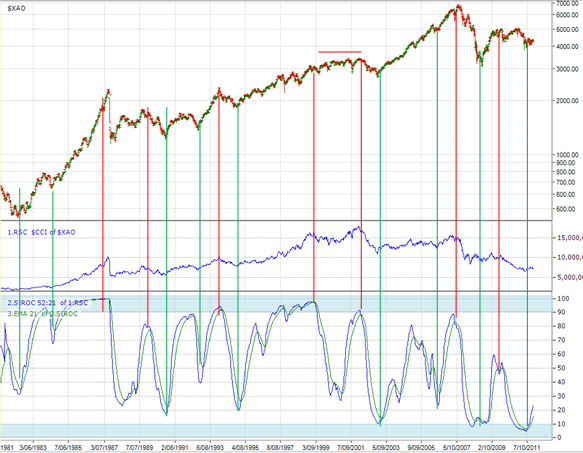
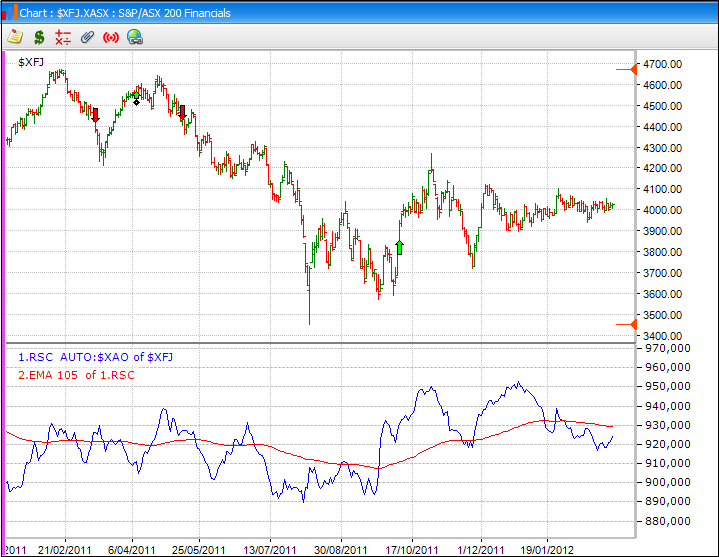
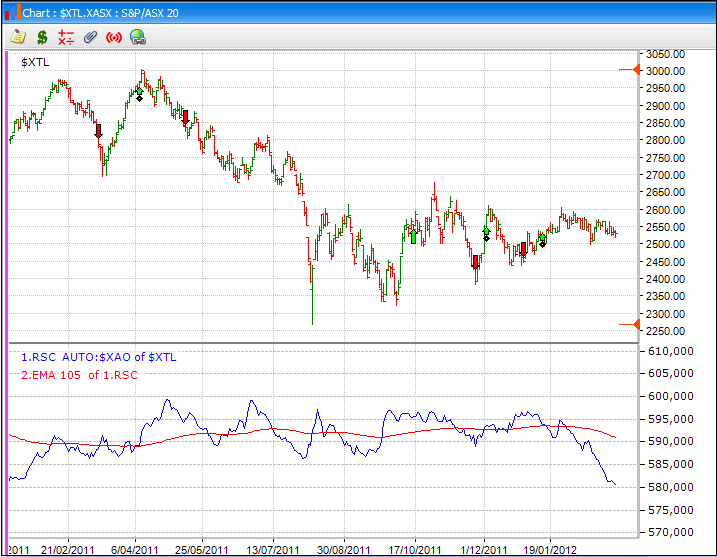
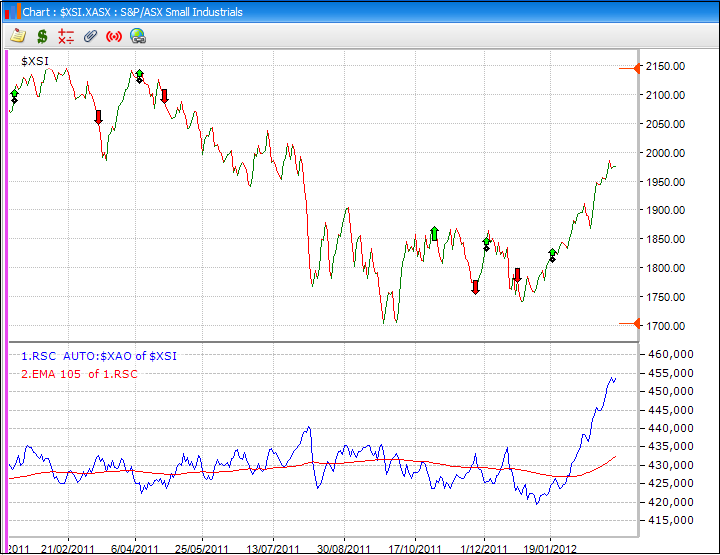
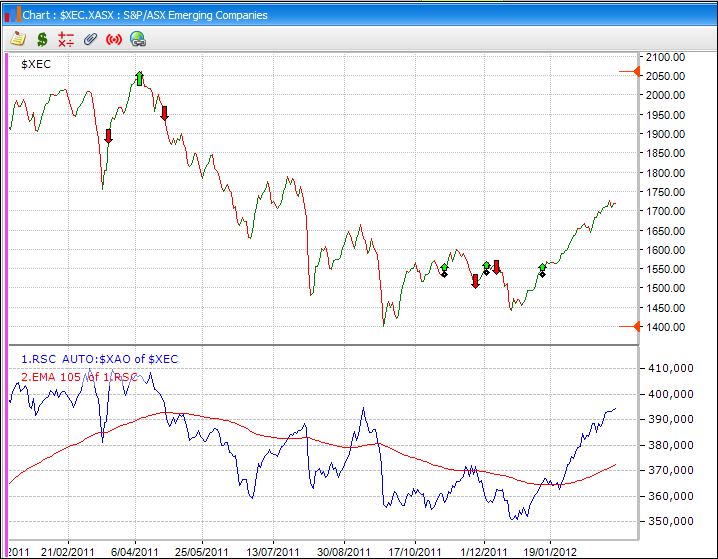
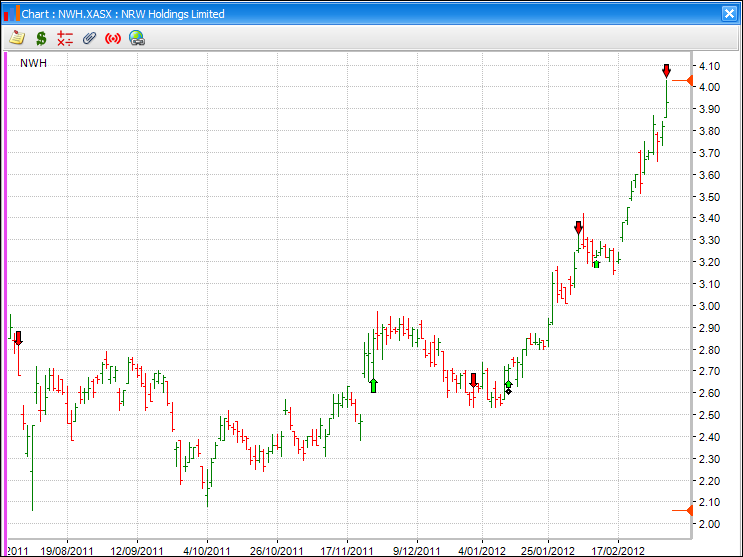
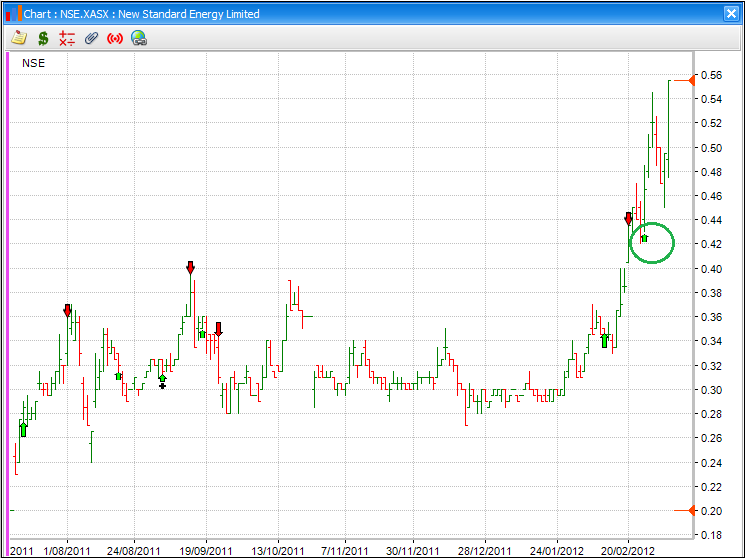


4 Responses
Hi Gary,
The above seems like an inovative and new way to look at market risk that’s the great thing about SWS you are always looking for improvements!!!!!!!!!!!!!!!!!!
G’day Gary,
I always look forward to your monthly newsletters and thanks again for sharing your wisdom in this treacherous market. The new format is interesting but I’m missing the tables you always do showing short, medium and long term trends in global indices, commodities and ASX sectors.
Gary,
Again I like the different approach love it when your on ymyc expecially yep you have had some interesting chats with one or two of the fundamentalists.
I love this article – even as the market has idled sideways over more than 7 months there are still buys about, and the majority of those buys are performing fabulously! It is a good thing to understand.